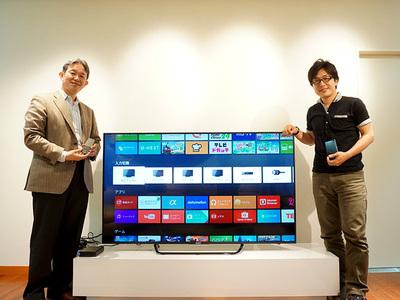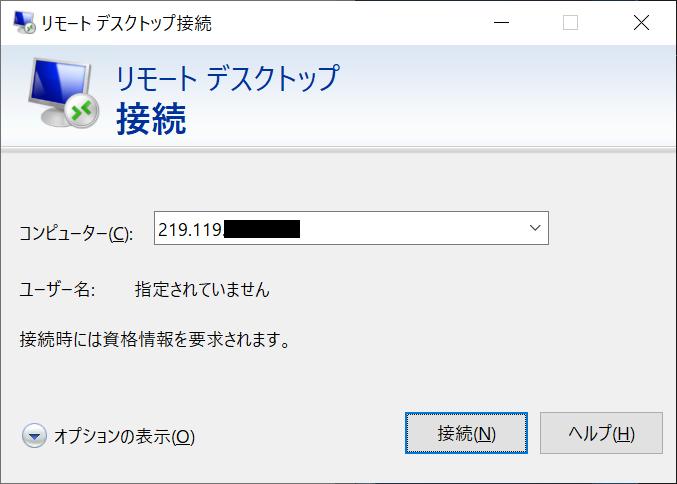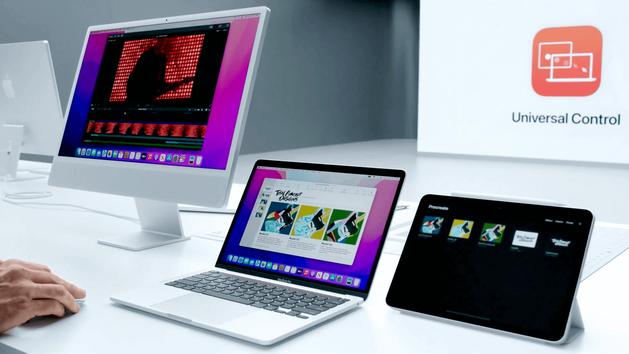The core of adopting Android TV is to break away from the ``in-house principle''. ” and “improved usability” are the three pillars. In it, he has also used the expression, ``weave tapestry using industry standards as warp and unique technology as weft''. The true identity is the product group that uses Android TV, which was announced this time.Sony's Android TV. The photo shows the X900C series, which features a thin design. The thinnest part of the X900C series is about 4.9mm. At the press conference, it was described as "thinner than Xperia" (President Hirai). The point is that the content has become more diverse. Until now, in the extreme, we could only receive broadcasts, but there is also video content on the Internet. Customers are getting more and more information from their mobile devices. It's also the content. We've done a lot of deliberations from the perspective of how to easily project such things on the big screen.
Among them, we wondered if we could seamlessly link the mobile devices that our customers use the most. .
Most of the UI is also based on Android. Input switching can be done not only with the classic "input switching button" of the remote control, but also with the Android menuAndroid TV is equipped with a function called "Google Cast". This is to realize the same functions provided by Chromecast, an external peripheral device, on various devices. At this year's CES, "Google Cast for Audio" was also prepared to transfer only music to the device instead of video.

Current TVs have the ability to display smartphone content on TVs. So there is no change based on "what you can do". However, the current function takes time to display. It takes several tens of seconds for the video to start appearing, and it takes a long time to wait even for a single photo. Also, when transferring from a smartphone, there are few people who can immediately answer "where to tap with which application". If you connect a Sony smartphone to a Sony TV, it's fine, but if it's a third-party product, it's even more confusing. The scenario of "showing photos from a smartphone on a TV because I want everyone to see the photos" has been around for nearly 10 years. But how many products have been "fast, wireless, and usable by everyone"? After all, there are many people who connect with a cable or hand over with a memory card.
However, this is not the case with Google Cast-based Android TV. It is basically included in the OS, and is implemented as a function that "transfers by tapping the same icon" in many applications. The target smartphone is not only Xperia, but also Android as a whole. Some Cast functions are also included in the iOS app, so you can use them from there as well.
What's more, switching is much faster. In the past, it was often necessary to call the function for that purpose, but with Android TV, the OS waits for Cast, so the TV does not need to perform any special operation. It takes less time to display. Of course, I'm not saying that you can use it without any knowledge, but there is no doubt that the threshold will be lower than before.
Since it is Android, web search is of course possible. However, input with the keyboard is not the main axis, but "voice input" using a smartphone or a dedicated remote control. Of course, it also supports JapaneseThe specifications of Google Cast have been made public to some extent, and if we form a partnership with Google, it will not be difficult to implement it on devices other than Android. In fact, Samsung's Tizen-based TVs did something similar. However, it is also possible because Samsung implemented it in-house. Sony's VP chose to stop implementing it in-house and instead work with its partner, Google. In other words, it is a breakaway from the "all-self-sufficiency" principle.
Imamura: In the past, everything was done in-house. We have developed the SoC in-house, and we have created Linux-based software in a way that suits it.
However, when considering future business development, is there any point in re-doing the mobile application/hardware linkages that are already abundant in the world based on our own ideas? It has been debated for a long time.
Here, we reviewed the basic architecture based on Android, which is close to the world standard, and used our engineering resources to achieve areas where Sony should be strong, such as "picture quality and sound quality" and "beautiful appearance". I decided to focus on doing it. There are also operational (development and manufacturing) reasons for that.
The same goes for hardware when it comes to not being self-sufficient. As explained by Mr. Imamura, it was previously realized with Sony's own SoC, but from Android TV-based products, it was developed in partnership with MediaTek, a Taiwanese semiconductor manufacturer that also handles many SoCs for smartphones. used.

![Lenovo's 8.8 inch one-handed tab "Legion Y700" full specs released! [Is the price in the 40,000 yen range?]](https://website-google-hk.oss-cn-hongkong.aliyuncs.com/drawing/article_results_9/2022/3/9/207e1be231154e91f34c85b4b1d2126c_0.jpeg)
![EVsmart blog Toyota's electric car "bZ4X" that makes you feel comfortable with electric cars and quick chargers / No% display of battery level [Editorial department] Popular articles Recent posts Category](https://website-google-hk.oss-cn-hongkong.aliyuncs.com/drawing/article_results_9/2022/3/9/752542064665dc2bd7addbc87a655694_0.jpeg)

